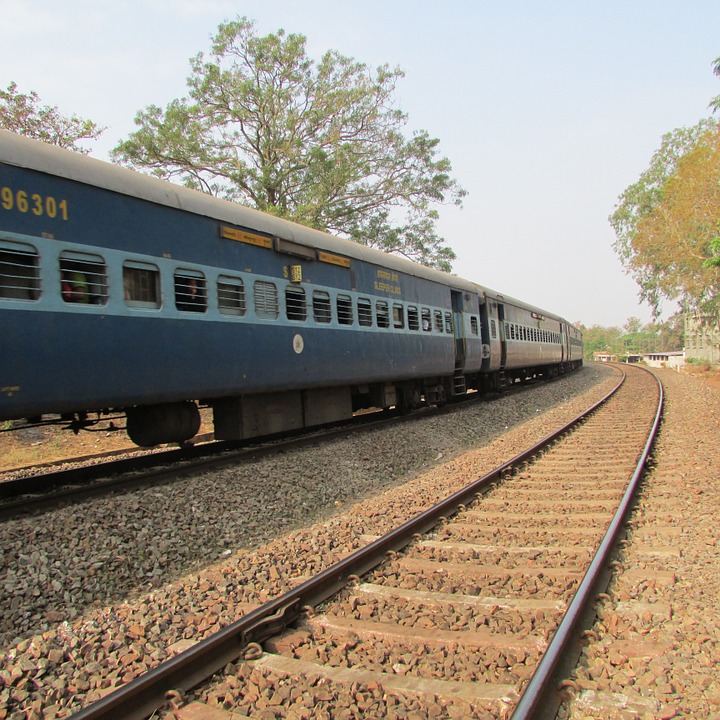
Heatstroke victims let down badly by Indian railways

There was a time, many years ago, when a pilgrimage to the Hindu holy town of Varanasi was considered a dangerous journey with the elderly never sure whether they would return to tell their tale. But today that is not the case. It is safe to travel, especially by trains. Or is it? The death of six passengers due to a heatstroke inside a train casts serious doubts about this assumption.
On June 10, four senior citizens — Bundur Palanisami, Bal Krishna Ramaswamy, Dhanalakshmi and Subbaraya died when they were travelling on Kerala Express between Agra and Coimbatore. They were on a visit to Varanasi as part of a 68-member group. On June 5, Rajesh Gupta of Ghazipur died travelling in Kushinagar Express and five days earlier, Sita Ahirwar of Banda died in the general coach of the UP Sampark Kranti Express – all of them due to heatstroke.
Who could have imagined that in 21st century India, an aspiring superpower with the ability to send a spacecraft to Mars and armed with the world’s top-rated technologists and scientists with a possible state-of-the-art bullet train on the cards, people could die like flies inside the compartment of a supposedly well-equipped prestigious long-distance train?
It was not as if the four were packed like cattle, reminiscent of trains that carried Jewish prisoners to concentration camps during the Second World War. In the modern republic of India where all citizens are supposed to be the rulers, where the government cries hoarse its commitment to social equality we still have a basic situation where the elderly cannot safely travel by train in peak summer.
The railways, with its highly qualified managers, technocrats and ministers has been unable to provide basic life-saving amenities inside trains that could have made all the difference. India, as they well know, is a sub-continent where distances to cover are massive. Anyone who has travelled long-distance by sleeper class will agree that trains trundle along lengthy stretches that simply seem devoid of human population in this otherwise populous country.
If anyone develops a health condition when travelling on these long, desolate routes there is no way external medical intervention is possible. Not even first aid. There may be first aid kits but chances are the medicines may either have expired or the boxes will be empty. It has probably never occurred to the decision-makers sitting in the majestic portals of the air-conditioned Rail Bhavan in Delhi to create a functional mobile health infrastructure that is available for passengers in each long-distance train.
Even if it is not possible to man these trains with doctors, there could at least be para-medical staff with minimal health equipment that could have saved the six heatstroke-hit passengers.
But the railway mandarins think big and modern. They are about to introduce masseurs on long-distance trains. You can get a massage for a reasonable ₹100 and above depending on how many minutes you need the massage. Some 30 long-distance trains will have a group of four to five expert masseurs to do the needful. This reminds one of the famous repartees of the French Queen Marie Antoniette on the eve of the 18th century French revolution. When told the people did not have bread, she said, “Let them eat cake”.
What use would the measures have been for the four elderly passengers who were dying of a heatstroke? The railways argue that the intention is to generate revenue by introducing value-added services. That is as specious as reasons go. More importantly, it gives a peek into the mindset of bureaucrats and ruling politicians who have either lost touch with ground realities or simply don’t care about common people.
It is not as if the heatstroke was unexpected. In summer, in north and central India particularly, the blazing hot winds can be deadly for those travelling by non-AC compartments. And, this has been the situation for years. Yet, it has never occurred to those making decisions in the railways to be prepared for any exigency. Even if it has, that has not been seen in practice.
A colleague related how his dad suffered from heatstroke many years ago and they rushed out of the train at the next station where, as expected, there was no medical facility. They abandoned the journey, went into the nearest hospital in that town and managed to avoid a tragedy.
For the record, the Indian Railways is among the world’s most extensive operations. It carries 23 million passengers every day across a network spanning at least 66,000 km. In other words, a population bigger than the biggest Indian city of Mumbai is constantly on a train. There are about 13 lakh employees and around 7000 railway stations. The net revenue is in the range of ₹20,000 crore annually.
So we are talking of a gargantuan service, with a mind-boggling array of figures. Yet, inexplicably, basic medical services are lacking on trains. Apologists may argue that of the huge numbers that travelled, only six died of a heatstroke. In other words, taking recourse to statistics to brush aside the personal tragedy. That would also be an disingenuous argument as each of the dead not only leaves behind distraught family and friends but has also been let down by a system that the individual trusted to transport them safely.


